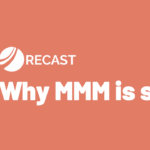Sales and promotions are a tricky concept and many ecommerce brands struggle to measure them correctly. We’ve all seen the marketers who, after running a sale, go on Twitter to celebrate their “biggest day ever.” But was it the right thing for the business? It’s important to have a much more subtle understanding of how promotions work in order to correctly analyze the financial impact on the bottom line of your brand.
In this article, we will discuss what are the pull forward and pull backward effects, what marketers should be measuring, different models to evaluate promotions, and a few considerations that can help you run more ROI-positive sales.
Key Considerations in Pull Forward Promotions
There are two main effects that sales and promotions come with, and marketers need to be aware of them when they’re planning for the future.
1 – Pay attention to your margins
This should be obvious, but we still see brands that miss this. You need to know exactly how much margin you are giving away – and whether that is financially viable or not.
Particularly in this era where efficient growth is highly valued, generating significant top-line revenue with low or negative margins is not ideal if it fails to advance the business’s bottom line.
2 – Be aware of the “pull forward and pull backward effect”
Let’s talk about Black Friday. In the US, consumers are heavily trained that great deals are coming on the day following Thanksgiving. Because of this collective understanding, consumer behavior changes around those dates:
People tend to not buy as many things in the beginning of November because they know they can wait two weeks and get a better deal on it. And also, in the two weeks following Black Friday, we also see reduced purchasing because they just did it at Black Friday prices.
This doesn’t apply to all products, but a lot of consumer goods do see this effect across all the holidays that have consistent sales associated with them.

Many brands see this pull forward / pull backward effect where customers delay purchasing leading up to the sale, and then there’s a “hangover” following the sale. Bad week, amazing week, bad week.
Here’s the problem: when measuring how a promotion worked, you can’t just measure the “amazing week” by itself. You need to take the full period into account to evaluate the effectiveness of that promotional event.
Don’t just point to the best day of the year and start giving high fives around the office. The pre-periods and post-periods can actually swamp the total effect of the sale, especially if you gave away too much margin in that peak. That’s how you will be able to accurately judge if the promotional event was a net positive or not for your brand.

Evaluating the Incremental Effects
Now, how can brands measure the success of a promotional campaign and the impact of pull forward/backward?
Like we said, most brands don’t measure it at all – so asking this question is already a step forward.
We’ve also seen brands try to establish a formula that incorporates the lift of promotion sales + the halo effect of non-discounted adjacent products minus the cannibalization and pull forward. While this method is more holistic and uses historical data, we don’t think it gets it right in practice.
Using marketing mix modeling is a good start, but most MMMs still don’t get accurate results either. At Recast, we’ve developed a really sophisticated econometric method within our MMM for measuring the effectiveness of the sale period. This is actually a really interesting proprietary IP that our statistics team has developed since it is a very subtle and difficult concept to measure correctly.
Practical Considerations When Running Promotional Events:
While you, of course, want to make sure your promotions are incremental, there are specific circumstances where you might be okay with taking low margins. For example:
- If you want to accelerate inventory sell-through because you want to sell out a specific SKU (the “end of season sale”).
- If you need more liquidity and you decide to purposely pull demand forward.
- If you have historical data that your promotional sales incentivize more LTV long term.
At the same time, before you run your next promotion, also know that they can shape your consumer’s behavior:
If you run constant promotions, you are training your customers to anticipate sales and your pull forward effect will be longer. For example, if you know your favorite clothing store has a promotion at the end of every month, you’ll always wait until those days to buy – your pull forward/backward effect is now constant.
Also, promotions affect your margins but also your brand equity. Offering excessively steep discounts might lead to a temporary spike in sales but could result in an overall negative impact on how your brand is perceived – especially for luxury brands.
Conclusion
Pull forward promotions can be a double-edged sword for businesses, providing a temporary boost in sales but potentially leading to long-term shifts in consumer behavior and profitability. To truly assess their incremental effects, marketers must adopt a comprehensive approach that considers the entire promotional period and factors in both margin and consumer behavior analysis.
With Recast’s MMM, brands can audit their promotions and see how incremental they actually are so they can make more informed decisions that benefit the bottom line.



